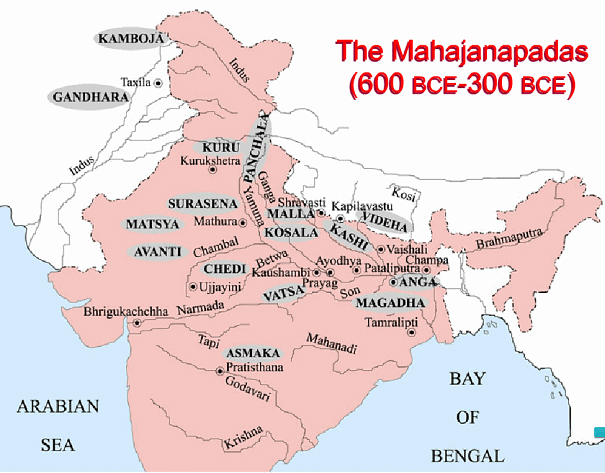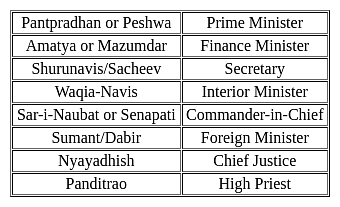APSET Paper 2 Mock Test - 6 (History) - AP TET MCQ
30 Questions MCQ Test APSET Mock Test Series 2025 - APSET Paper 2 Mock Test - 6 (History)
Which among the following is not a book of Alexander Cunningham?
Which one of the following statements regarding Satvahanas is NOT correct?
| 1 Crore+ students have signed up on EduRev. Have you? Download the App |
With reference to the Mauryan Art, consider the following statements.
Assertion(A):- The tradition of constructing pillars is very old and it may be observed that erection of pillars was prevalent in the Achamenian empire as well.
Reason(R):- The Mauryan pillars are very similar to the Achamenian pillars.
How many Prime Ministers of India have been awarded Bharat Ratna till date?
Which one of the following contains the biographies of the sufis of India, and the author presented it to Jahangir?
In the context of post-independence India, the linguistic reorganization of states was a significant and contentious issue. Which state was the first to be created on linguistic lines, setting a precedent for the linguistic reorganization of states in the country?
In 1612, at which among the following places, the British established their first factory (trading post) in India ?
With reference to the Vedic period, consider the following schools of Upanishad pairs:

Which of the following pairs is/ are correctly matched?
Consider the following statements:
Assertion(A):- Khonds from Orissa were the first to revolt against British land revenue policy
Reason(R):- Lord Hardinge I, banned the custom of human sacrifice practiced by Khonds of Orissa.
Which of the following categories of land are mentioned in the Chola inscriptions?
1. Pallichchhandam
2. Shalabhoga
3. Vetti
4. Kadamai
5. Vellanvagai
Consider the following statement regarding Ashoka's Dhamma:
1. The theme of ahimsa is an important aspect of Ashoka's dhamma and is frequently mentioned.
2. The ceremony of the dhamma is described as consisting of proper courtesy to slaves and servants, respectful behavior towards elders, and liberality to sharmanas and Brahmanas.
3. Major Rock Edict I declares prohibition of animal sacrifice and holiday of festive gatherings.
How many of the above statements are correct?
Consider the following statements about the Pashupati Seal of the Harappan civilization:
i. It was found at Mohen-Jo-Daro.
ii. A human figure in Yogic posture is depicted on the seal.
iii. Marshall coined it, Proto Shiva.
iv. A pictographic inscription of six symbols is inscribed on the seal.
Choose the right answer:
Consider the following statements regarding the Indus Valley civilization:
1. People were following phallic worship.
2. Mixed types of burial systems were observed.
Which of the following is/are statements are correct?Post-independence, India made significant progress in addressing famines and epidemics through:
- Establishment of the Planning Commission
- Adoption of the Green Revolution
- Eradication of smallpox
- The launch of the Universal Immunization Program
The response and policies of the British colonial administration regarding famines and epidemics were characterized by:
- Proactive and timely interventions
- Systemic neglect and underinvestment in public health infrastructure
- Scathing criticism from historians
- Significant efforts to address food security
Which of the following is the correct chronological order of rulers of the Pala dynasty?
1. Devapala
2. Gopala
3. Dharmapala
4. Ramapala
Which among the following event led the British government of Lord North to undertake a legislation to meet the situation and provide some form of legal government for the Indian possessions of the East India Company, which resulted in Regulating Act of 1773?
Consider the following statements:
- Badami paintings are the example of later mural tradition.
- Paintings at Tiruparakunram, near Trichy, represent the early phase of the Vijayanagara style.
- Pithoro in the parts of Rajasthan and Gujarat are some of the traditional forms of murals.
Which of the statements given above is/are correct?
Consider following statements regarding Indian Parliamentary committee 1893
1). Its members were Sir William Wedderburn and WS Caine
2). It was formed to agitate for entry of Indian subjects into the British Parliament
Which of the above statement(s) is/are correct?
Consider the following statements:
- Main deity is Lord Shiva.
- There is also a Nandi shrine.
- It was built during the Rashtrakuta phase.
- It is completely made in Dravida style
- It is carved out of a portion of a hill.
The statements given above are referring to which one of the following temples?
Consider the following statements regarding the Social life of the Early Vedic Period:
1. The Rig Vedic society was matriarchal.
2. Women were given equal opportunities as men for their spiritual and intellectual development.
3. There was the presence of child marriage.
Which of the statements given above is/are correct?
|
60 tests
|



















